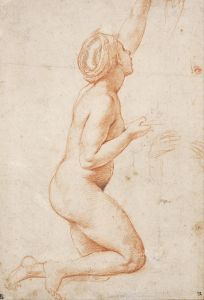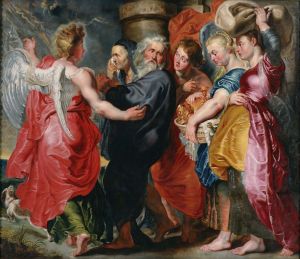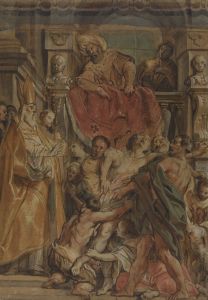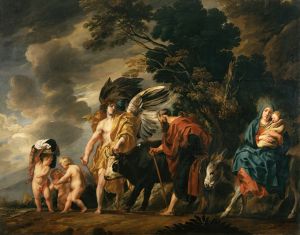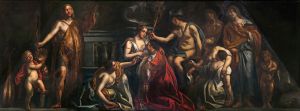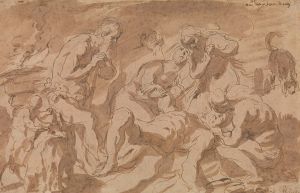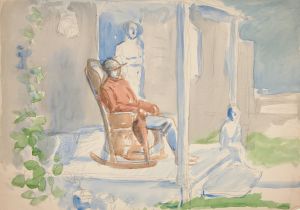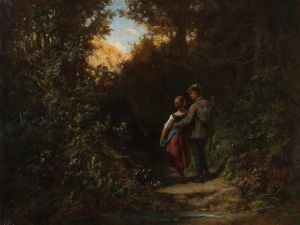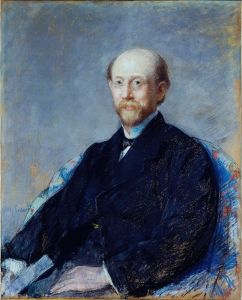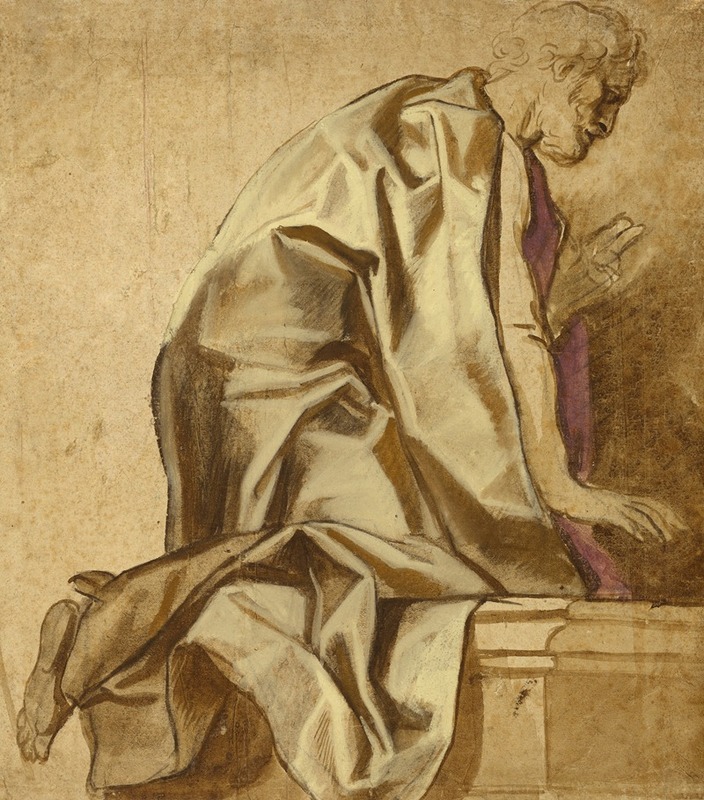
Man Kneeling, Facing Right
A hand-painted replica of Jacob Jordaens’s masterpiece Man Kneeling, Facing Right, meticulously crafted by professional artists to capture the true essence of the original. Each piece is created with museum-quality canvas and rare mineral pigments, carefully painted by experienced artists with delicate brushstrokes and rich, layered colors to perfectly recreate the texture of the original artwork. Unlike machine-printed reproductions, this hand-painted version brings the painting to life, infused with the artist’s emotions and skill in every stroke. Whether for personal collection or home decoration, it instantly elevates the artistic atmosphere of any space.
Jacob Jordaens was a prominent Flemish Baroque painter, known for his vibrant use of color and dynamic compositions. He was a contemporary of Peter Paul Rubens and Anthony van Dyck, and like them, he contributed significantly to the artistic landscape of 17th-century Flanders. Jordaens is celebrated for his genre scenes, religious works, and mythological paintings, which often feature robust figures and a lively sense of movement.
"Man Kneeling, Facing Right" is one of Jordaens' works that exemplifies his skill in capturing human form and expression. This painting, like many of Jordaens' works, reflects the Baroque interest in realism and the depiction of human emotion. The subject of the painting is a man in a kneeling position, facing to the right. The composition focuses on the figure's posture and the play of light and shadow across his form, highlighting Jordaens' mastery of chiaroscuro—a technique that uses strong contrasts between light and dark to achieve a sense of volume and three-dimensionality.
Jordaens often drew inspiration from everyday life and classical themes, and his works frequently include elements of humor and moral lessons. While "Man Kneeling, Facing Right" may not be as widely recognized as some of his larger, more elaborate compositions, it nonetheless showcases his ability to convey a narrative through a single figure. The painting's simplicity allows viewers to focus on the nuances of the man's expression and the subtleties of his pose, inviting speculation about the context and story behind the image.
The Baroque period, during which Jordaens was active, was characterized by dramatic expression, rich detail, and a focus on realism. Artists of this era sought to evoke emotion and engage viewers through their works, often employing techniques such as foreshortening and dynamic compositions. Jordaens was particularly adept at creating scenes that were both lively and accessible, drawing viewers into the world he depicted.
Jordaens' work was influenced by his training and the artistic environment of Antwerp, where he spent most of his life. He studied under Adam van Noort and was heavily influenced by Rubens, whose studio was a major center of artistic production in the city. Despite these influences, Jordaens developed a distinct style that set him apart from his contemporaries. His paintings are noted for their robust figures, warm color palettes, and a certain earthiness that reflects his interest in the human condition.
"Man Kneeling, Facing Right" is a testament to Jordaens' skill as a draftsman and his ability to convey complex emotions through simple compositions. While specific details about the painting's provenance and current location may not be widely documented, it remains an example of Jordaens' contribution to the Baroque movement and his enduring legacy as one of Flanders' great painters.
In summary, Jacob Jordaens' "Man Kneeling, Facing Right" is a work that encapsulates the artist's strengths in portraying human figures with emotional depth and technical precision. It reflects the broader themes of the Baroque period and Jordaens' unique approach to painting, characterized by a blend of realism, vitality, and narrative richness.





